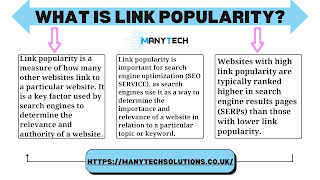TECHNICAL SEO TIPS
Here are some technical SEO tips that you can consider:
- Optimize
your website speed: A fast-loading website is essential for good user
experience and better SEO SERVICE rankings. You can
use tools like Google PageSpeed Insights or GTMetrix to check your website
speed and identify areas for improvement.
- Make
sure your website is mobile-friendly: With the majority of internet users
browsing on their mobile devices, it's crucial that your website is
optimized for mobile. This includes having a responsive design,
easy-to-use navigation, and fast load times on mobile devices.
- Use
descriptive URLs: Your website URLs should be easy to read and descriptive
of the content they lead to. This helps search engines understand the
context of your pages and can improve your rankings.
- Ensure
your website is crawlable: Make sure that search engines can easily crawl
and index your website by checking for crawl errors in Google Search
Console, using a sitemap, and avoiding duplicate content.
- Optimize
your meta tags: Your meta tags, including the title tag and meta
description, can impact your click-through rates in search results. Make
sure they accurately describe your page content and include your target
keywords.
- Use
structured data: Structured data helps search engines better understand
the content on your website and can improve your visibility in search
results. Use tools like Google's Structured Data Markup Helper to add
structured data to your pages.
- Implement
HTTPS: Having a secure website with HTTPS is important for both user trust
and search engine rankings. You can obtain an SSL certificate from your
web host or a certificate authority.
- Use
canonical tags: If you have duplicate content on your website, use
canonical tags to signal to search engines which page is the original
source of the content.
- Monitor
your website's performance: Regularly monitor your website's performance
using tools like Google Analytics and Google Search Console. This can help
you identify areas for improvement and track the impact of any changes you
make.




Comments
Post a Comment